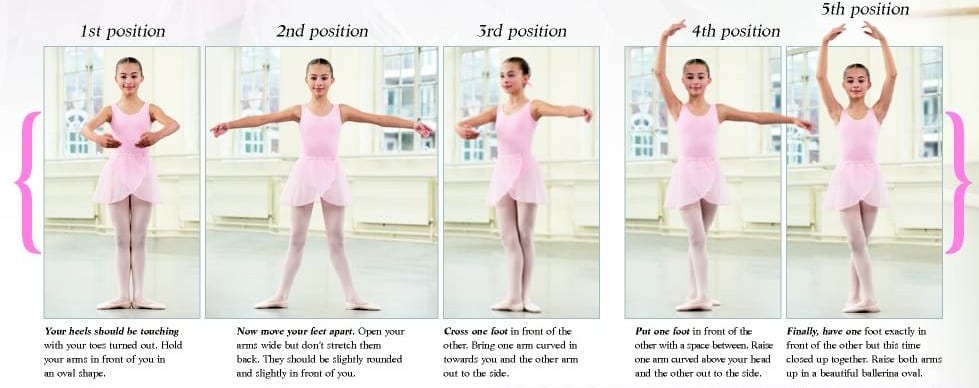
- #Basic ballet moves for beginners how to
- #Basic ballet moves for beginners full
- #Basic ballet moves for beginners free
Second position – For this ballet pose, spread your feet slightly to the left and right, adding space between the heels, keeping your feet and legs facing outward. Unless you’re forming a plié while in this position, keep your legs straight. Now, t urn each foot out as far as you can, then lower your arms until your fingers almost touch your thighs, forming parentheses around your torso. Ballet instructors will likely tell beginners making this ballet position to keep their heels touching, but more advanced dancers may maintain up to two inches between their heels. Photo by įirst position – Form a “V” with your feet, placing the heels together and the toes apart. To begin, take a look at the image below, a great resource from the Ballet Dance Experts website. Each position also includes the legs, arms, and hands. While children usually learn the foot placement of each position first, sometimes it’s helpful to look at the whole picture from the very beginning. The Five PositionsĪlmost all ballet for beginners starts with the five fundamental positions: first, second, third, fourth, and fifth. Instead, keep them in the same position, no matter where your arms go. At first, you’ll be tempted to move your shoulders closer together or pull them forward. The gateway position might look basic at first glance, but it’s incredibly important to achieve a slight downward slope with your arms, and to keep your shoulders turned out.

#Basic ballet moves for beginners free

Did your shoulders move too? If you only moved one arm, did the other arm stay in the same place? Next, you’ll learn a transition technique that keeps your movements fluid and body parts in all the right places.
#Basic ballet moves for beginners full
Ballet techniques focus on engaging the entire body, so for every position of the feet or legs, there’s a complementary port de bras that will allow your upper body to complete the full effect.Įn avant (forward) – hold your arms out in front of your torso, rounding them slightlyĮn haut (high up) – now hold them above your head, keeping your shoulders flatĮn bas (below) – bring them down to your sides, with your palms pointed inward toward your legsĪssume one position, then move one or both of your arms into the next. In ballet (as in French), port de bras refers to the positions and movements of the arms.
#Basic ballet moves for beginners how to
But the truth is, long before you learn complicated footwork or graduate to pointe shoes, you need to learn how to coordinate your arms and legs. Port de Bras Basicsįor those just starting out, you might be hyper-focused on your footwork, perhaps forgetting about your arms. From the five basic ballet positions to the port de bras, follow along to learn all the ins and outs of this elegant genre of dance. Ready to step up to the barre and learn some ballet ? Our dance guide covers some of the most basic ballet moves every aspiring ballet dancer will need to know. From Italy’s Cecchetti Method to the cross-genre techniques of contemporary American ballet, these beginner ballet positions keep dancers of every level in perfect form. No matter what genre your dance instructor teaches, the following fundamentals will always be a part of the curriculum. With that said, many dancers will agree that it’s helpful to approach the barre with a basic understanding of its style and positions.

Not to mention, there’s no single “right” way to learn ballet for beginners. After all, there are many different thought processes, techniques, and variations associated with this dance form and it can takes years to master it. But that’s not to say it doesn’t come with its fair share of challenges. The art of ballet is undeniably beautiful, graceful, and stunning.


 0 kommentar(er)
0 kommentar(er)
